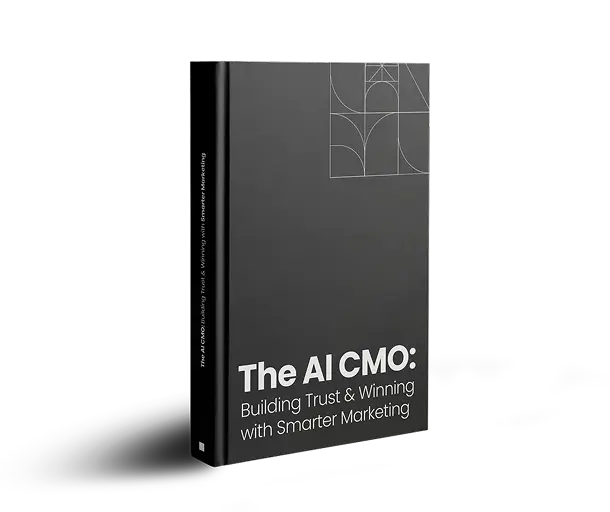
Content is the heart of any marketing campaign or strategy. Marketers don’t move forward with their promotions without having a content marketing strategy in place. So to optimize your marketing efforts, you will need the kind of content that stands out in front of your audience and makes them take action you require.
Trends change and so do the shape and structure of content. So it is ideal that you change your content marketing strategy to bring the best outcomes. Take a look at a simple 7-step plan that will take your strategy to the next level.
What is Content Marketing?
Content marketing is a strategic marketing approach that ensures your audience gets a consistent supply of relevant and educative content. And this value is what keeps them coming back to your site after the first visit.
Don’t get it wrong. Content marketing is not a quick marketing solution to increasing traffic to your website. It’s a long-term strategy that requires consistency. And this is where it gets tricky for marketers.
As you start, creating the first pieces of content will be a breeze. But soon after, sticking to the content schedule you created with so much motivation becomes tough.
Distractions could easily have you going for months without posting a single blog post. And it could make you lose your audience.
Why Do You Need a Long-term Content Marketing Strategy?
A long-term content marketing strategy helps you plan for your future posts early enough. This makes you consistent in the frequency of posting and value provided in each post. And it puts you in the good books of Uncle Google.
It makes you rank better authentically and sustainably. And not with just one post but continually.
A long-term content marketing strategy also helps you form a bond with your audience. It gives you a recognizable voice that earns you loyalty, brand trust, and referrals, which expand your audience.
You will also have an easy time adapting to the changes in the quality of content demanded by search engines and readers. This ensures that such changes do not make you lose your audience as you scrabble to keep up.
Seven Steps to Planning a Long-term Content Marketing Strategy
Here are steps to help you create a long-term strategy that will take your content marketing to the next level.
1. Set Goals
You need to start by setting goals. What does your business want to achieve in the short-term and long-term?
A few examples are:
- Raising brand awareness
- Creating a loyal online community
- Building brand credibility and a positive reputation
- Moving the audience through the sales funnel
- Stimulating demand for products and services
The goals should be SMART (Specific, Measurable, Achievable, Realistic, and Timely). For instance, by what percentage do you want to increase brand awareness and by when?
Once you have your objectives clear, you can create a content marketing strategy that aligns with these goals.
2. Identify Your Buyer Persona
You cannot create a long-term market strategy effectively if you do not know who you are targeting.
It is not only marketers in new businesses who need to identify their target audience. This is an important step for established businesses as well. You could be targeting a new market, and a buyer persona can make it easier to provide relevant content.
So, what is a buyer persona? It is a research-based profile that defines a target customer. A buyer persona contains specific details like their lifestyle, daily challenges. It also shows the process through which they make decisions.
You can develop your market’s buyer persona through market research. You can also gather insights from your customer base through tools like surveys.
Here is an example of a buyer persona from HUCACE, a human resource firm, as shown on HubSpot.

Image source: HubSpot
HUCACE has created a fictional character complete with a name and face. It shows how a day in Tina’s life is; her goals, challenges, personal background, and pain points. It also shows the solution she is looking for and how she searches for information.
With these details, it becomes easy to create content that will bring Tina closer to making the right decision.
Here is another example of content created for a specific persona, as portrayed by Red Bull’s popular video Last Call for Mr. Paul.

Image source: Red Bull YouTube Channel
Red Bull is an energy drink that targets busy people who need an energy boost. And getting late for a flight is one of the challenges such a busy individual is likely to face. This video got over 135 million views.
3. Do a Content Audit
The next step to creating an effective long term content strategy is identifying what you already have. This is known as a content audit.
It keeps you from wasting time in content duplication. And you get to identify the content gaps that you can address in your content marketing strategy.
Dig up and assess all content assets in your content management system (CMS). Upload the content in a file manager and add notes to make it easier when retrieving it for future use. Sort it based on:
- Content title
- Types of content, such as eBooks, guides and worksheets
- Buyer’s journey stage
- Marketing funnel stage
- Buyer Persona
Here is an example of a table you can create to sort out your content assets. You can tailor it to meet any other details that can help sort out your content.
| Content Title | URL | Buyer Persona | Stage of Buyer’s Journey | Marketing Funnel Stage | Category / Topic | Type of Content | Conversion | Publish Date | Notes |
A content audit makes it easier to identify areas content that you can repurpose and reuse. A survey by SEMrush showed that 51% of marketers consider updating content as the second most effective method of improving organic traffic.
Considering a comprehensive approach to content optimization? Explore our content marketing services for strategic insights and sustainable growth.

4. Do an Event-Based Audit
You will need to consider all upcoming events that will need content creation, such as projects and inbound marketing campaigns. Take note of their time and prioritize creating content for these events that connect to the buyer’s journey.
When carrying out an event-based audit, sort out the events by month. And take note of the theme of each event. You can then come up with possible blog post topics that will be relevant to every event.
The series of events should be accompanied by a series of blog posts that will increase the marketing potential of your content.
5. Organize Your Content
We began by identifying your business’s short- and long-term goals. And now, with a clear picture of your content assets and upcoming events, you can create a content calendar that meets these goals.
Brainstorm content ideas and topics with your team while paying attention to the buyer’s journey. Put your ideas in a single document that shows the direction your content will take. It will help you point out content gaps in your plan.
Arrange the topics and keywords by themes and assign them to different months in descending order. You can have one theme running for a month or quarter year.
Your content calendar should make it easier for the content marketing team to contribute and collaborate. It should also be in real-time, making it easy to be reactive to content trends and accommodate new initiatives.
6. Plan for Scheduling and Distribution
With your content calendar full, you can create the content planned. It should be entertaining while providing value to your readers.
Schedule the content to be published regularly. You should be predictable to your audience. Find a specific day of the week and time when your audience is most active. And have your content go live at this time, consistently.
Choose your distribution channels carefully. The right channel will depend on the type of content, and the stage in the sales funnel. You can use organic search, email, social media, or paid advertising.
For instance, video content will do well on social media channels like Instagram. Content that targets a person who is almost buying will do well in email.
7. Measure
Your work is not over until you have measured if your long-term content marketing strategy is yielding the intended results.
Once again, we go back to our SMART goals. Use metrics to check if you have achieved them in the measure you intended and within the time frame.
You can use metrics such as:
- Conversion – Does the audience take the intended action after consuming the content? For instance, did they make a download?
- Engagement – How does the audience interact with your content? Do they share it, leave comments, or follow the links to related content.
- Lead Generation – How many leads did you generate from the content?
- Sales metrics – How much money did you make from the content, directly or indirectly? And what is the return on investment?
- Organic Search – How did the content rank on Google, and did the content draw organic traffic to the website?
Conclusion
Content marketing without a strategy is doomed to fail. Creating a long-term strategy will give your content marketing direction. It will also ensure that your content is moving in the same direction as your business.
It will create the consistency that builds a loyal audience while ensuring that you do not waste resources with repeated content.
Ready to kickstart your long-term content marketing strategy? Reach out to us for personalized guidance and support.
Our blog
Latest blog posts
Tool and strategies modern teams need to help their companies grow.

Video has emerged as one of the most effective tools to cut through the noise and con...

The way B2B buyers research, engage, and decide has changed and so must the way marke...

Channel marketing helps B2B companies grow by partnering with third-party sellers. It...






